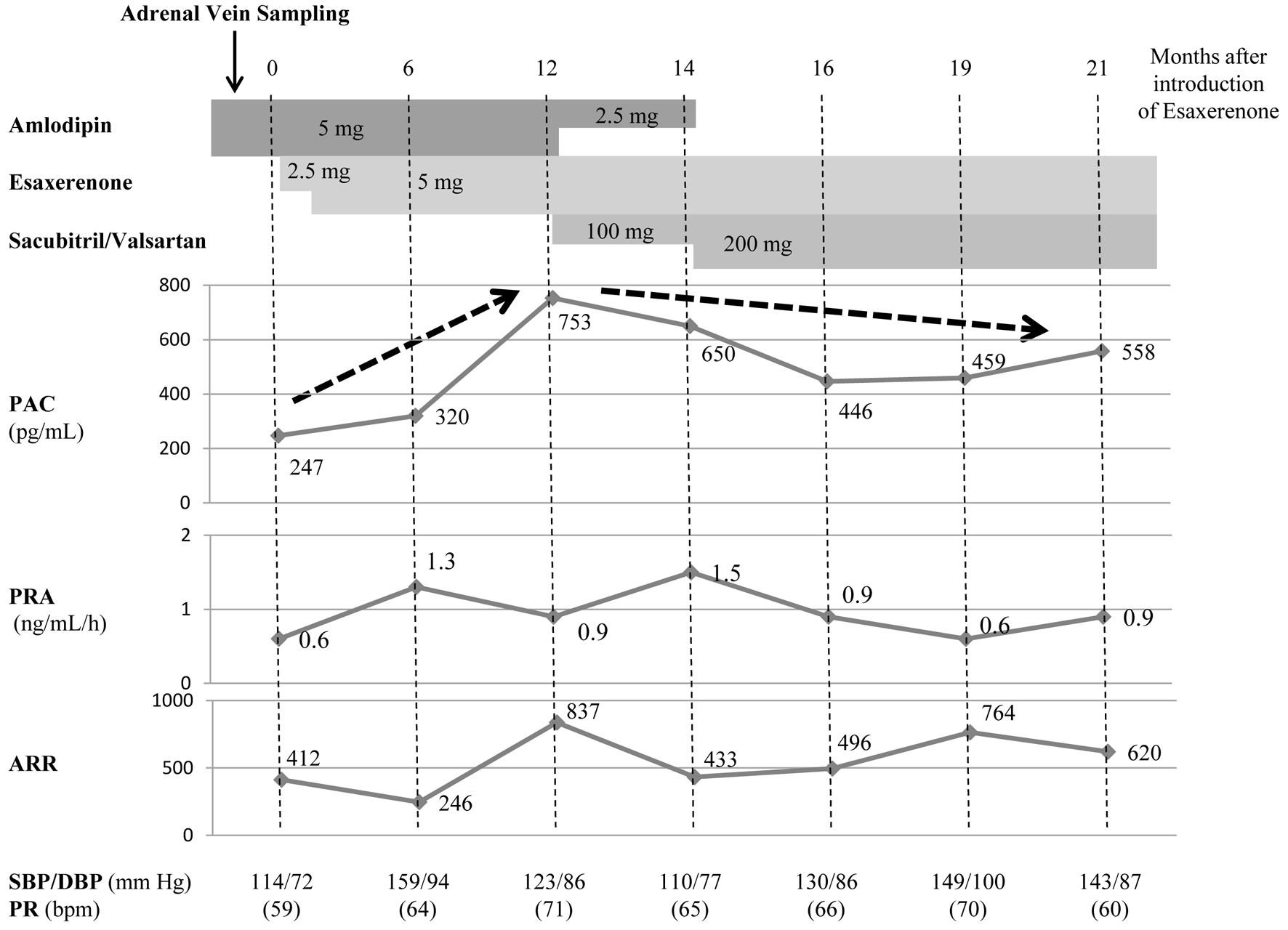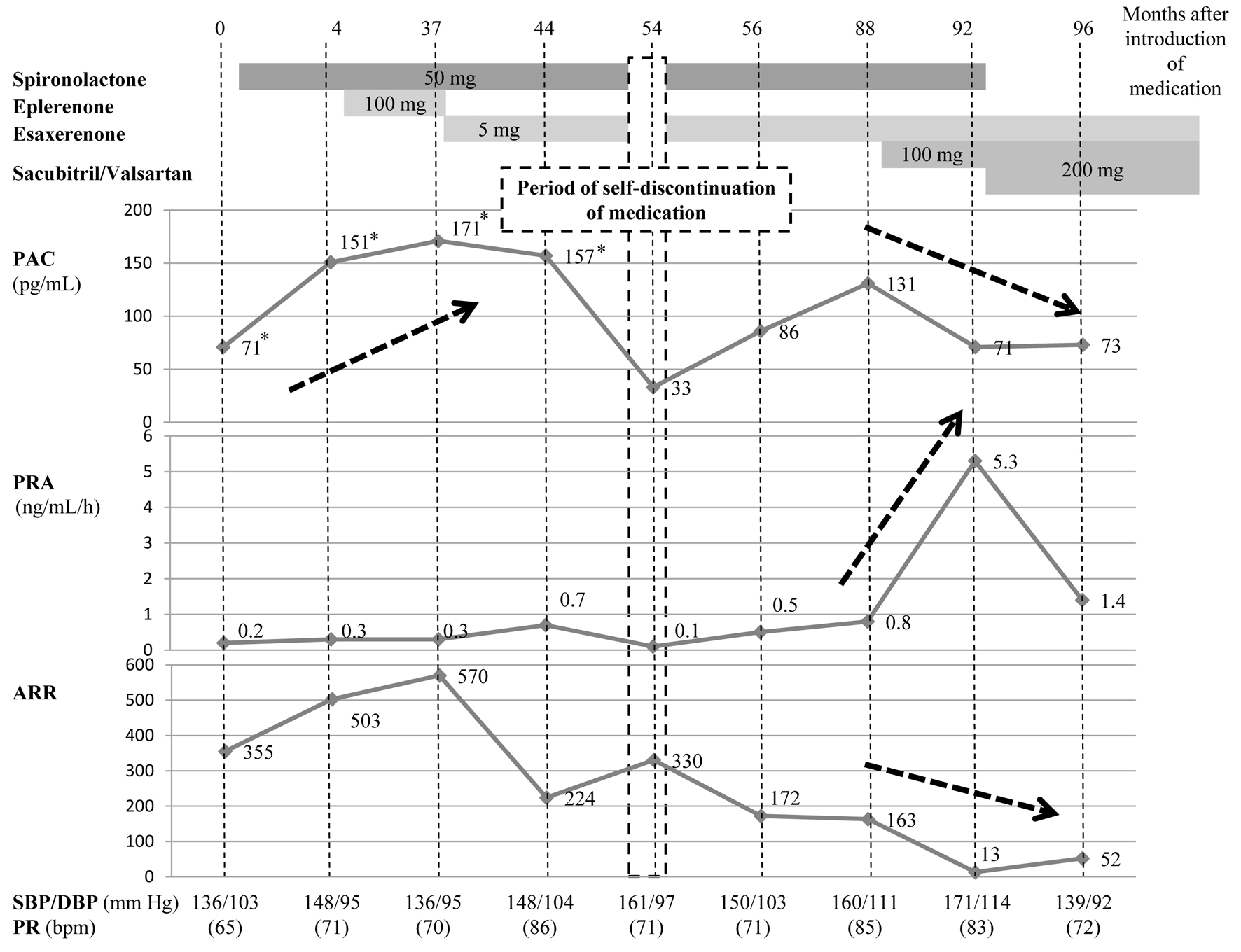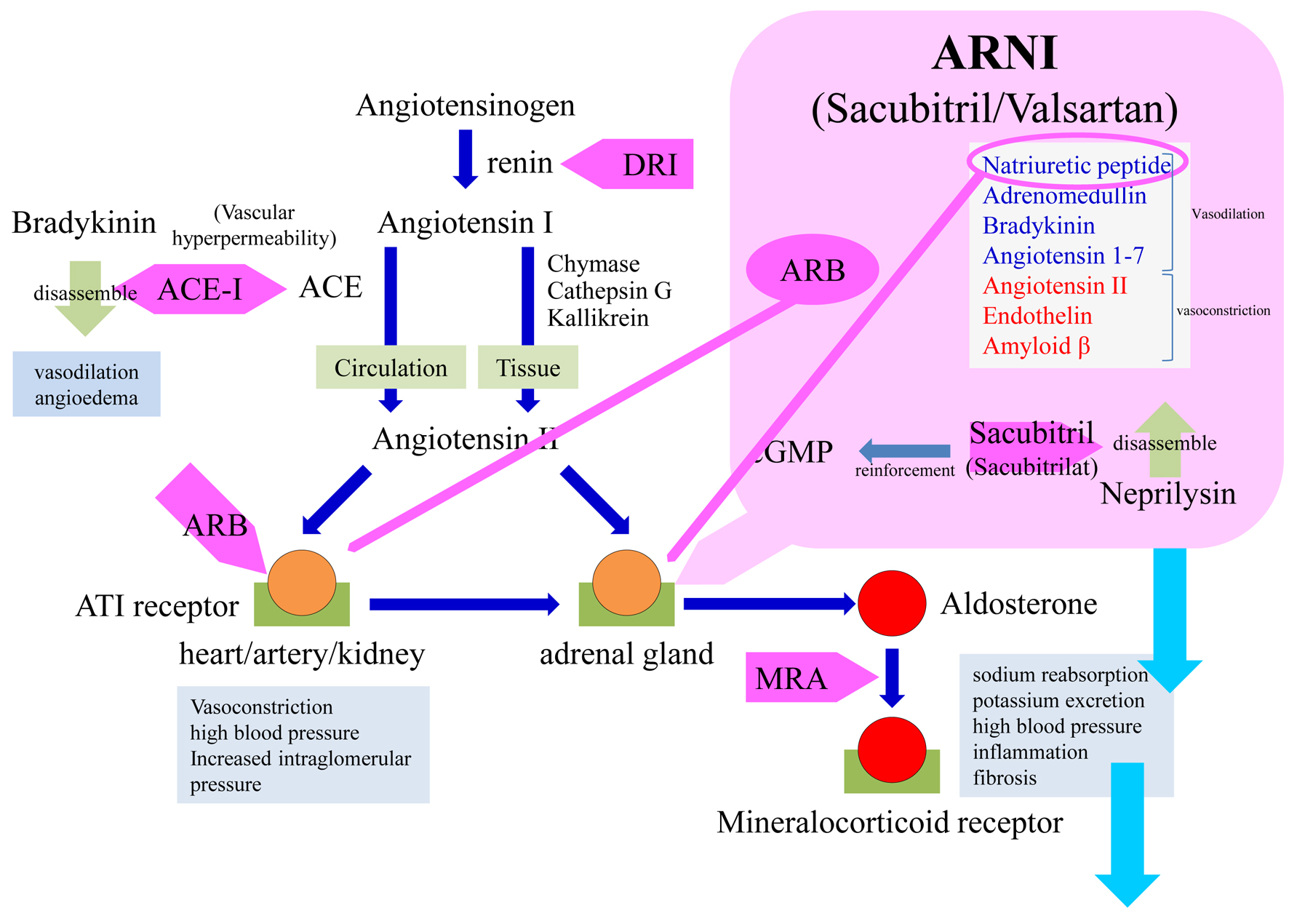Figures

Figure 1. Case 1 involved a patient with primary aldosteronism likely caused by an aldosterone-producing adenoma (calcium channel blocker → sacubitril/valsartan). The patient was on amlodipine, with insufficient reduction in BP. Therefore, esaxerenone was added, although BP still did not decrease sufficiently, and the PAC increased. Amlodipine was subsequently changed to sacubitril/valsartan; PRA temporarily increased, and the PAC gradually decreased. PAC: plasma aldosterone concentration; PRA: plasma renin activity; ARR: aldosterone-to-renin ratio; SBP: systolic blood pressure; DBP: diastolic blood pressure; PR: pulse rate; bpm: beats per minute.

Figure 2. Case 2 involved a patient with primary aldosteronism likely caused by idiopathic hyperaldosteronism (calcium channel blocker → sacubitril/valsartan). Although the addition of esaxerenone led to an increased PAC, PRA did not sufficiently increase. About 3 years after esaxerenone was added, the PAC gradually decreased. After switching amlodipine to sacubitril/valsartan, the PAC and ARR decreased slightly. *PAC values measured by radioimmunoassay prior to March 2021 have been converted to values consistent with the use of CLEIA to reflect changes in the standard assay used to measure PAC [19]. PAC: plasma aldosterone concentration; PRA: plasma renin activity; ARR: aldosterone-to-renin ratio; CLEIA: chemiluminescent enzyme immunoassay.

Figure 3. Case 3 involved a patient with primary aldosteronism likely caused by idiopathic hyperaldosteronism (spironolactone → sacubitril/valsartan). Although eplerenone was changed to esaxerenone, PRA did not exceed 1.0 ng/mL/h. After the patient temporarily self-discontinued treatment, the PAC (which had been elevated with mineralocorticoid receptor antagonist decreased, and PRA was again suppressed as a result of primary aldosteronism. After the medication regimen was resumed, sacubitril/valsartan was added. Because PRA markedly increased and the PAC decreased, spironolactone was discontinued, and sacubitril/valsartan was increased to the maximum dose. Finally, the PAC and ARR decreased, and PRA remained above 1.0 ng/mL/h. PAC: plasma aldosterone concentration; PRA: plasma renin activity; ARR: aldosterone-to-renin ratio.

Figure 4. Schema of the renin-angiotensin-aldosterone system and sacubitril/valsartan. As valsartan blocks angiotensin II type 1 receptors and sacubitril exerts a natriuretic peptide-mediated effect on the adrenal glands, the combination of sacubitril/valsartan directly suppresses aldosterone production and secondarily suppresses the mineralocorticoid receptor-mediated effect. Because the mineralocorticoid receptor is blocked by administration of an MRA, however, positive feedback activates the RAAS and stimulates aldosterone production. ACE: angiotensin-converting enzyme; ACE-I: angiotensin-converting enzyme inhibitor; ARB: angiotensin receptor blocker; ARNI: angiotensin receptor-neprilysin inhibitor; AT: angiotensin; cGMP: cyclic guanosine monophosphate; DRI: direct renin inhibitor; MRA: mineralocorticoid receptor antagonist; RAAS: renin-angiotensin-aldosterone system.



